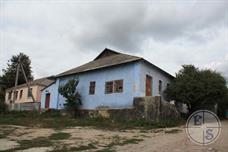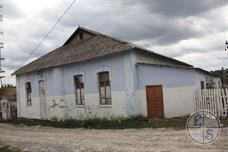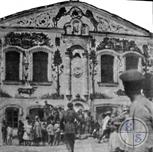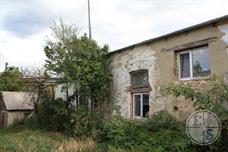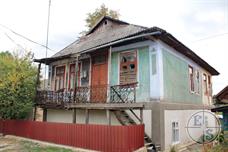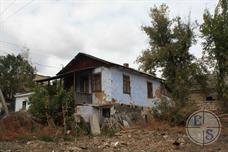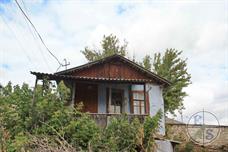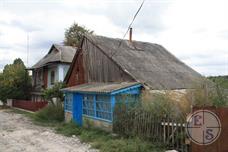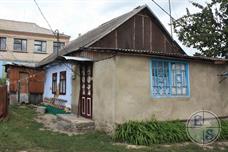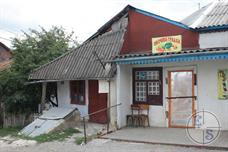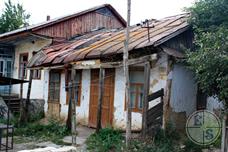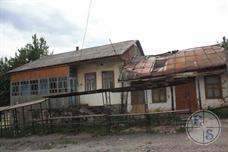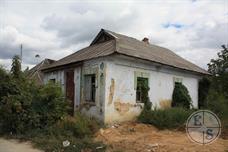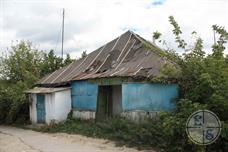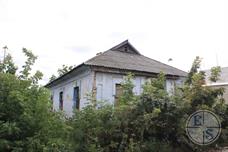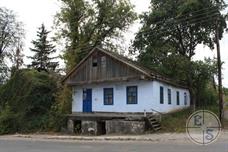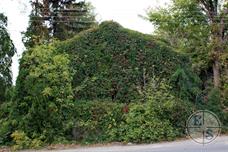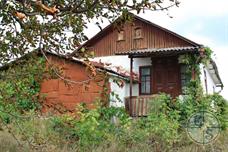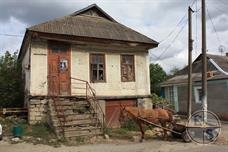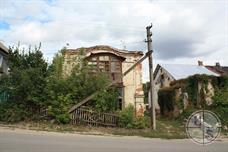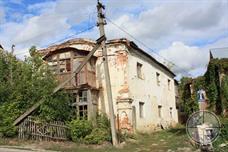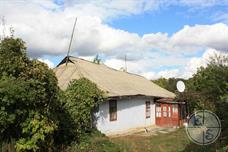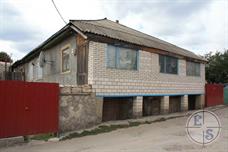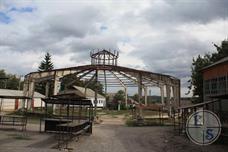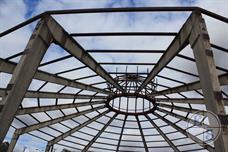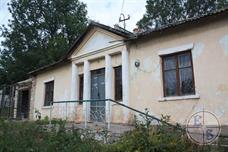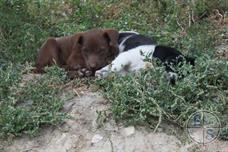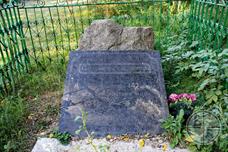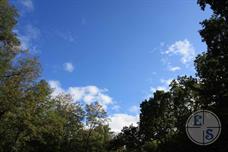Peschanka
Peschanka, 2012
Peschanka is first mentioned in historical sources in 1734 in the XVIII - early XIX century the village belonged to the magnates and Konetspolskogo Lubomirski, in 1837 was transferred to the Russian treasury, which aired it in the use of various landlords.
The first documented mention of the Jewish population Gerbils refers to the end of the XVIII century.
In 1852, among the 400 Jews of Peschanka were 17 Jewish craftsmen, turnover of which in the aggregate amounted to 800 rubles a year. In 1871, 1 200 of its inhabitants (mostly Jews) were attributed to the trading estate, and around 2000 - to agriculture; wooden houses in Peschanka was 389.
In 1853, according to the official. According to Peschanka was a synagogue, its 311 parishioners and breech Rabbi Gershon Pustyl'nik.
In 1889, there were five in the town, and at the beginning of the XX century. six Jewish houses of worship with the "spiritual government."
In 1900 he opened a private school in the Jewish male Peschanka.
At the beginning of the XX century. Jews kept all the shops in the town - manufactory, clothing, hardware, leather goods, stationery goods, dishes, their hands were also almost all the food trade. In the possession of the Jews were a lumberyard, lime production plant inns.
The first documented mention of the Jewish population Gerbils refers to the end of the XVIII century.
In 1852, among the 400 Jews of Peschanka were 17 Jewish craftsmen, turnover of which in the aggregate amounted to 800 rubles a year. In 1871, 1 200 of its inhabitants (mostly Jews) were attributed to the trading estate, and around 2000 - to agriculture; wooden houses in Peschanka was 389.
In 1853, according to the official. According to Peschanka was a synagogue, its 311 parishioners and breech Rabbi Gershon Pustyl'nik.
In 1889, there were five in the town, and at the beginning of the XX century. six Jewish houses of worship with the "spiritual government."
In 1900 he opened a private school in the Jewish male Peschanka.
At the beginning of the XX century. Jews kept all the shops in the town - manufactory, clothing, hardware, leather goods, stationery goods, dishes, their hands were also almost all the food trade. In the possession of the Jews were a lumberyard, lime production plant inns.
The wave of pogroms that began in late 1917, Peschanka has suffered one of the first.
During the Civil War the authorities in Peschanka changed several times. In August 1919 it is located Kotovskogo brigade headquarters. After Kotovskij retreated place was occupied by the regiment "Blue Division" of directors, which the soldiers staged a bloody massacre that has cost the life of 168 (according to other sources - 250) of the Jews.
In 1924, there were 750 Jews in Peschanka (about 3100 inhabitants). Some Jewish families were engaged in cultivation of the land and the cultivation of tobacco.
March 23, 1923 there was established the Jewish agricultural koooperativ "Diligence", bringing together 21 families (72 people), mostly the poor and workers. Authorities have identified the collective farm 52 acres of land, ORT has helped in the acquisition of livestock, agricultural tools and seeds. Subsequently they were organized and other Jewish collective "Zemtrud", which consisted of 32 families, "Guarantee" (31 families), "Brotherhood" (26 families), "Friendship" (45 families); they received assistance from ORT.
In the years of the NEP largest traders of Peschanka have found a way to resist the competition of cooperatives: they are united, and gained a common patent for the trade, thereby reducing their tax payments. Many small traders, unable to withstand the competition, were forced to engage in farming.
During the Civil War the authorities in Peschanka changed several times. In August 1919 it is located Kotovskogo brigade headquarters. After Kotovskij retreated place was occupied by the regiment "Blue Division" of directors, which the soldiers staged a bloody massacre that has cost the life of 168 (according to other sources - 250) of the Jews.
In 1924, there were 750 Jews in Peschanka (about 3100 inhabitants). Some Jewish families were engaged in cultivation of the land and the cultivation of tobacco.
March 23, 1923 there was established the Jewish agricultural koooperativ "Diligence", bringing together 21 families (72 people), mostly the poor and workers. Authorities have identified the collective farm 52 acres of land, ORT has helped in the acquisition of livestock, agricultural tools and seeds. Subsequently they were organized and other Jewish collective "Zemtrud", which consisted of 32 families, "Guarantee" (31 families), "Brotherhood" (26 families), "Friendship" (45 families); they received assistance from ORT.
In the years of the NEP largest traders of Peschanka have found a way to resist the competition of cooperatives: they are united, and gained a common patent for the trade, thereby reducing their tax payments. Many small traders, unable to withstand the competition, were forced to engage in farming.
In the town a Jewish school was opened in 1922, it learned to 190 children. Teachers School, I am convinced Zionists, all the forces opposed to the introduction of the teaching of Yiddish.
In addition to the school, which was regarded as one of the best in the area, in the town of the Jewish children's home for 50 orphans it was organized.
In 1923-1924, in Peschanka among the 318 members of the union were 170 Jews from the 30 members of the Komsomol - 17 Jews in a part of the village council was 8 Jews.
In addition to the school, which was regarded as one of the best in the area, in the town of the Jewish children's home for 50 orphans it was organized.
In 1923-1924, in Peschanka among the 318 members of the union were 170 Jews from the 30 members of the Komsomol - 17 Jews in a part of the village council was 8 Jews.
Nazi occupation lasted from 23 July 1941 to 18 March 1944. In August 1941, the Jews were forced into labor at harvest. About 150 people were shot by the Nazis on the outskirts of the village. In the fall of 1941 Jews Gerbils were deported to concentration camps in villages and Domanevka Bogdanovka (Mykolaiv region), only a few managed to escape destruction, hiding in the ghetto Chechelnik.
In the early postwar decades in Peschanka, with a population of about six thousand people lived a few hundred Jews. Gradually, the number of Jews in the village was reduced in 1998 in Peschanka had a few Jewish families - about 15 people.
In 2012, the Jews do not live in Peschanka.
V.Lukin, "100 Jewish settlements in Ukraine"
In the early postwar decades in Peschanka, with a population of about six thousand people lived a few hundred Jews. Gradually, the number of Jews in the village was reduced in 1998 in Peschanka had a few Jewish families - about 15 people.
In 2012, the Jews do not live in Peschanka.
V.Lukin, "100 Jewish settlements in Ukraine"
In Peschanka no particularly outstanding attractions, but a place definitely worth visiting. A large number of a variety of cute Jewish houses give the streets of some kind of surreal, contrasts sharply with our usual city streets. Walk to the new cottage area of any city N. Houses - one more beautiful than the other, the diversity and richness of architectural elements is surprising. But - the feeling of lifelessness, especially felt if this palace was built only recently. And it is quite a different impression here - every house, even abandoned for a long time, has its own aura and the old streets of the inexpressible words creates an atmosphere of calm and comfort ...
Vinnitsa Region

My shtetl
My shtetl
Jewish towns of Ukraine
Jewish towns of Ukraine
